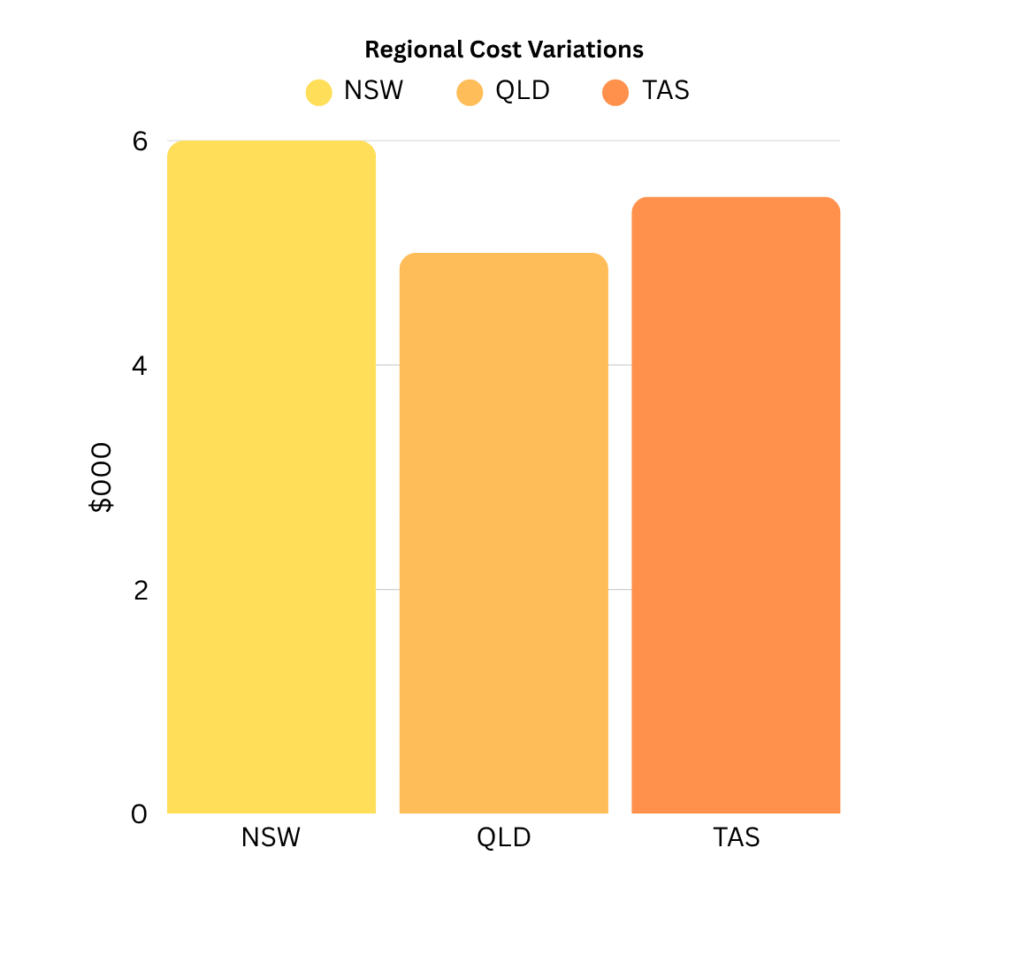Solar power saves over 3.4 million Australian households $1,600-$2,000 annually on electricity bills at $0.20-$0.35/kWh, but understanding the upfront costs of a 6.6kW system ($5,000-$10,000) is essential for planning a smart investment. Costs vary by system size, components, location, and incentives, making it critical to know what to expect. This guide, based on Clean Energy Council (CEC) data, breaks down the cost of going solar in Australia, aligning with your budget.
System Size and Base Costs
A 6.6kW system, ideal for medium households (20-25 kWh/day), costs $5,000-$8,000 before rebates in Sydney or Brisbane, generating ~9,000 kWh/year (5.5 sun hours) and saving $1,800/year at $0.20/kWh. Smaller 3kW systems ($3,000-$5,000) suit low-usage homes (~10-15 kWh/day), producing ~4,500 kWh/year in Perth, saving $900/year. Larger 10kW systems ($8,000-$12,000) for high-usage homes yield ~14,000 kWh/year, saving $2,800/year, offering flexibility based on energy needs. Prep your home first.

Panel and Inverter Costs
Panels account for $2,640-$3,300 of a 6.6kW system (~$0.40-$0.50/W). Mid-tier CEC-approved brands like Longi (~$0.40/W) save $500-$1,000 over premium REC (~$0.50/W), maintaining ~9,000 kWh/year output in Melbourne. Inverters cost $1,000-$2,000 (e.g., Fronius for unshaded roofs), while microinverters ($150-$300/panel) add $1,000-$2,000 for shaded Adelaide sites, boosting efficiency by 5-10%. Choosing reliable components ensures long-term savings. See top panels.
Installation and Labor Costs
Labor for a 6.6kW system ranges from $1,000-$2,000, depending on roof complexity (e.g., steep pitches in Canberra or multi-story buildings in Sydney). Installation takes 1-2 days with CEC-accredited installers adhering to Australian Standards (AS/NZS 3000), avoiding $500-$1,000 in future repairs. In remote Darwin, labor may rise to $1,500-$2,500, but competitive quotes, as guided by our quote guide, save $500-$1,000.
Government Rebates and Incentives
The Small-scale Renewable Energy Scheme (SRES) provides 25-30 STCs ($750-$1,200) for a 6.6kW system, reducing costs to $3,800-$7,000 in Brisbane or Hobart. State programs, like Victoria’s Solar Homes ($1,400) or South Australia’s Home Battery Scheme ($2,000), save $1,000-$3,200. Applying through CEC-accredited installers ensures eligibility, shortening payback periods to 3-5 years, making solar accessible for budget-conscious households.
Battery Costs and Benefits
Adding a 10kWh battery ($8,000-$12,000) increases total costs to $13,000-$20,000 but saves $600-$1,200/year at $0.30/kWh peak rates in Cairns by storing ~3,000-4,000 kWh/year. Rebates like Queensland’s Battery Booster ($3,000) lower costs to $6,000-$10,000. Batteries enhance energy independence, ideal for outage-prone rural Tasmania, but require weighing added costs against savings.
Regional Cost Variations
Costs differ by location due to sunlight and labor. In Brisbane (5.5 sun hours), higher output (~9,000 kWh/year) justifies $5,000-$8,000 systems with faster paybacks (3-4 years). In cloudy Hobart (4.5 sun hours, ~8,500 kWh/year), savings are slightly lower, extending paybacks to 4-5 years. Remote areas like Darwin see higher labor costs ($1,500-$2,500), but rebates balance expenses, ensuring $1,800/year savings across regions.
Financing to Manage Costs
Green loans (4-7% interest) spread costs (~$113/month for $6,000), offset by ~$150/month savings in Adelaide. Installer plans or leasing avoid upfront costs, preserving cash flow. Comparing terms from providers like Plenti saves $500-$1,000 in interest, making solar affordable without financial strain, especially for budget-conscious households in Perth.
Future Solar Trends
Solar is evolving with exciting trends on the horizon. Solar-plus-storage systems, pairing panels with batteries, could boost savings by 3-5% on bills by storing excess power, ideal for peak rates in Sydney. Smart inverters, adjusting output dynamically, save 2-3 hours weekly on monitoring and lift efficiency by 5-10%. Community solar projects let renters join in, spreading costs and savings across neighborhoods like Melbourne. Researching these takes time, but adopting them could add $200-$400/year in value for a 6.6kW system. Staying ahead ensures you maximize solar’s potential as technology advances.
Plan Your Solar Investment
Going solar in Australia costs $5,000-$10,000 for a 6.6kW system, delivering $1,800/year savings. Understand system sizes, component costs, and rebates to budget effectively. Partner with a CEC-accredited installer and explore our financing guide to make solar a smart, affordable investment!
This content is for informational purposes only. Estimated costs, savings, and performance figures are based on recent industry averages and may vary depending on location, usage, system specifics, and other factors. Consult a qualified professional, such as a licensed solar installer, for personalized advice. No guarantees are made regarding outcomes or results.
